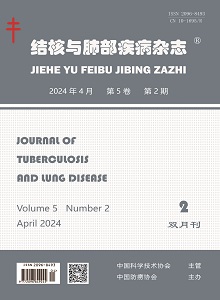Objective: To construct a new system of school tuberculosis prevention and control strategy by using Delphi evaluation method. Methods: Based on the national school tuberculosis prevention and control guidelines, as well as relevant literature on school tuberculosis prevention and control strategies in Wanfang Data, China Network Knowledge Infrastructure and other databases, and in combination with the current situation of tuberculosis prevalence in schools in Guangzhou, the implementation of preventive and control measures in schools, and the follow-up visits of cases and close contacts, the Guangzhou Institute of Tuberculosis Prevention and Treatment formulated a preliminary framework of school tuberculosis prevention and control strategy system, which involves 58 strategies in four major categories. Twenty-one experts across the country were organized to conduct two rounds of consultation on strategies. A new system of school tuberculosis prevention and control strategies and the weighting of the strategies was established based on the importance and feasibility of the selected strategies by using indicators such as expert positive index, expert authority coefficient (Cr);including degree of familiarity (Cs) and judgment basis (Ca), degree of concentration of experts’ opinions (including frequency range of full importance scores, frequency range of full feasibility scores, mean of composite scores and coefficient of variation (CV), degree of coordination of experts’ opinions (Kendall’s coordination coefficient), and coefficient of weighting of the strategies, etc. Results: The expert positivity index in both rounds of consultation was 100.0% (21/21), and the Cs, Ca, Cr, frequency range of full importance scores, frequency range of full feasibility scores, mean of composite scores and CV ranges in the first round of expert consultation were 0.83±0.11, 0.95±0.07, 0.90±0.07, 5.36% to 98.28%, 1.79% to 96.85%, 4.36±0.75, 0.05 to 0.20, respectively, and the Kendall coordination coefficients of the strategies was 0.343 (χ2=484.79, P=0.000); the results of the second round of expert consultation were 0.85±0.09, 0.94±0.08, 0.90±0.07, 8.62% to 97.83%, 6.52% to 95.53%, 4.51±0.60, 0.02 to 0.16, and 0.433 (χ2=315.24, P=0.000), respectively. Experts’ opinions were highly concentrated, and finally a new school tuberculosis prevention and control strategy system including 3 primary strategies, 7 secondary strategies and 25 tertiary strategies was established, as well as the weight of each strategy. Conclusion: The Delphi evaluation method was used to construct a new school tuberculosis prevention and control strategy system, and a new school tuberculosis prevention and control strategy suitable for the region was initially established, providing a scientific reference for promoting the precise prevention and control of schools tuberculosis.

 Wechat
Wechat